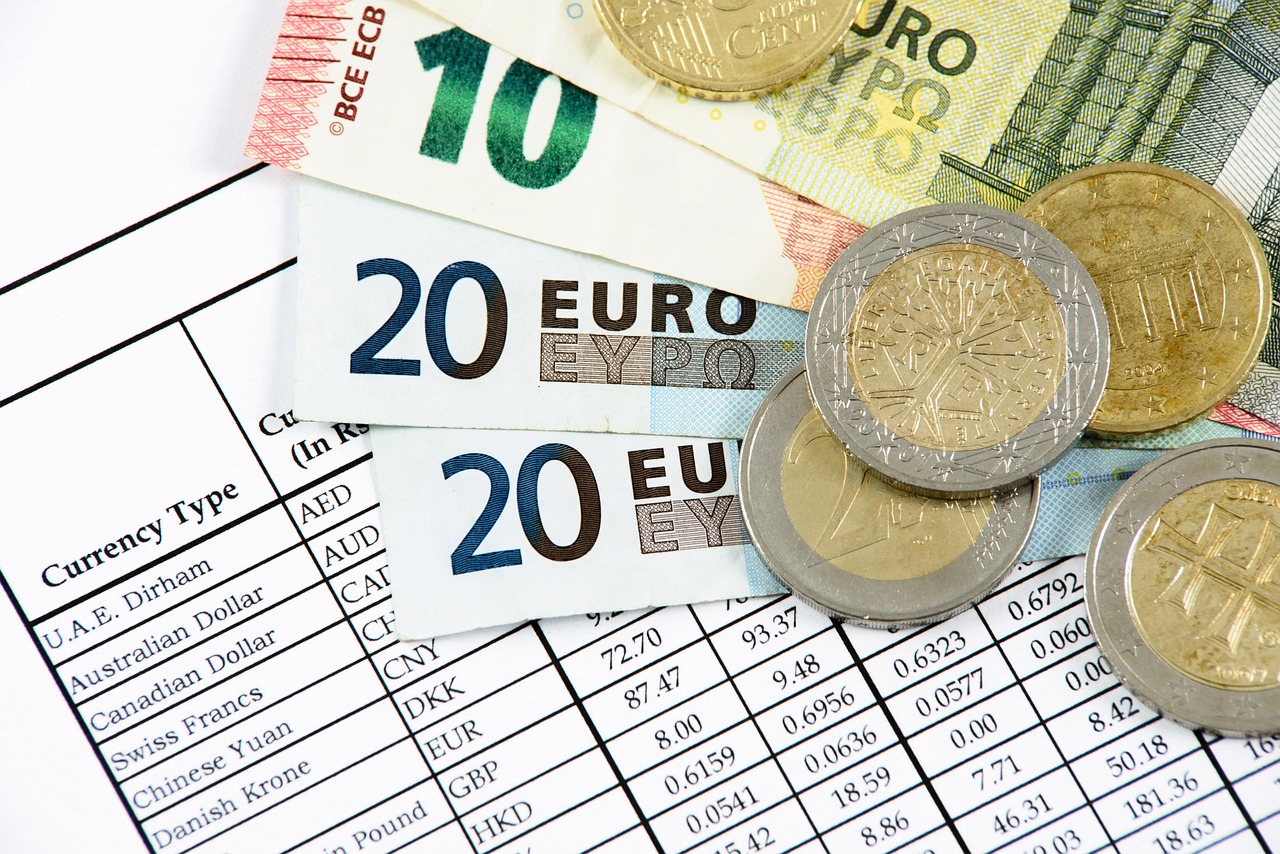Sending Money to the Philippines? Heres What You Need to Know About Fees, Safety, Legal Requirements, Bank Accounts, and Exchange Rates!
GPT_Global - 2024-03-17 06:30:03.0 630
What are the fees associated with sending money to the Philippines?
The Philippines is one of the top destinations for remittance, with millions of overseas Filipino workers sending money back to their families every year. However, there are fees associated with sending money to the Philippines that you need to be aware of to ensure that you are getting the best deal and your loved ones receive the maximum amount of money.
Firstly, most remittance services charge a transfer fee for sending money to the Philippines. This fee can range from a fixed amount to a percentage of the total amount being sent. It is important to compare the fees of different remittance providers to choose one that offers a lower transfer fee.
In addition to the transfer fee, some remittance providers also charge a currency conversion fee. Since the Philippine Peso is the local currency, any foreign currency needs to be converted before the money can be received by the recipient. This conversion fee can also vary between providers, so it is important to compare and choose the one with the lowest rate.
Another fee to consider is the exchange rate markup. This is the difference between the real exchange rate and the rate offered by the remittance provider. Some providers may offer a higher exchange rate but end up charging a higher transfer fee, while others may offer a lower exchange rate but a lower transfer fee. Again, it is important to compare and choose the best option for your needs.
Lastly, there may be additional fees for using certain payment methods, such as credit or debit cards. These fees can vary between providers and can significantly increase the overall cost of sending money to the Philippines. It is recommended to use a bank transfer or cash deposit option to avoid these additional fees.
It is also worth noting that some remittance providers may offer special promotions or discounts on transfer fees, especially for first-time users. This can help you save money on your first remittance transaction, but make sure to read the terms and conditions carefully to understand any hidden fees.
In conclusion, when sending money to the Philippines, it is important to consider the transfer fee, currency conversion fee, exchange rate markup, and any additional fees for payment methods. Comparing different remittance providers and choosing the one with the lowest fees can help you save money and ensure that your loved ones receive the maximum amount of money.

Is it safe to send money online to the Philippines?
Is it Safe to Send Money Online to the Philippines?
The Philippines is one of the top destinations for international remittance, with millions of dollars being sent to the country every year. Many Filipinos rely on these remittances from their loved ones abroad to support their families and improve their lives. With the rise of online remittance services, sending money to the Philippines has become easier and more convenient. But the question remains: is it safe to send money online to the Philippines?
The short answer is yes, it is generally safe to send money online to the Philippines. However, like any financial transaction, there are risks involved that you should be aware of. It is important to understand the potential risks and take necessary precautions to ensure the safety and security of your money.
One of the main concerns when sending money online is the possibility of fraud or scams. There have been cases where scammers pose as legitimate online remittance companies to steal money from unsuspecting customers. To avoid falling victim to these scams, make sure to only use reputable and accredited remittance providers. Check their website for a secure URL (https) and look for reviews and recommendations from other users.
Another potential risk is the security of your personal information. Online remittance companies require personal information such as your name, address, and bank account details to process the transaction. It is important to only provide this information to trusted and secure websites. Look for privacy policies and data encryption measures on the remittance provider's website to ensure the safety of your information.
It is also advisable to use a strong and unique password for your online remittance account to prevent hackers from accessing your funds. Change your password regularly and do not share it with anyone. Some remittance providers also offer additional security measures such as two-factor authentication or biometric verification to further protect your account.
In conclusion, while there are risks involved in sending money online to the Philippines, it is generally a safe and secure process if you take necessary precautions and use trusted remittance providers. With the convenience and speed of online remittance, it has become the preferred method for many Filipinos and their families abroad. Just make sure to do your due diligence and always prioritize the safety and security of your hard-earned money.
Are there any legal requirements for sending money to the Philippines?
The remittance business, which involves sending money to the Philippines, is subject to certain legal requirements. These requirements are in place to ensure the safety and security of both the sender and recipient. It is important to be aware of these regulations before sending money to the Philippines.
The first requirement is that both the sender and recipient must provide valid identification documents. This is to prevent money laundering and other illegal activities. The sender may need to provide a government-issued ID, while the recipient may need to present a valid ID and proof of relationship to the sender.
Another legal requirement is the limit on the amount of money that can be sent at a time. In the Philippines, there is a maximum amount of $10,000 USD that can be received in cash. Anything above this amount must be declared to the Philippine Bureau of Customs.
Additionally, remittance companies must be registered with the Philippine government and comply with their regulations. This ensures that the business is legitimate and can be held accountable for any issues that may arise.
Lastly, it is important to note that there may be taxes and fees associated with sending money to the Philippines. These vary depending on the amount sent and the chosen remittance company.
Overall, it is crucial to follow these legal requirements when sending money to the Philippines to avoid any complications or legal issues. Be sure to research and choose a reputable remittance company that complies with all regulations to ensure a smooth and secure transaction.
Can I send money to someone in the Philippines without a bank account?
Sending money to someone in the Philippines without a bank account is a common concern for many people. Thankfully, there are now several options available for remitting money to the Philippines without requiring the recipient to have a bank account.
One of the most popular methods is through money transfer companies such as Western Union, MoneyGram, and Xoom. These companies allow you to send money electronically, which can then be picked up in cash at designated locations in the Philippines. All the recipient needs to do is present a valid ID to claim the money.
If you prefer a more traditional approach, you can also send money through international postal money orders. These can be purchased at your local post office and sent via mail to the recipient in the Philippines. The recipient can then cash the money order at a local post office in their area.
Another option is to use prepaid debit cards such as Payoneer or VISA cards. These cards can be loaded with funds from your bank account or through online transfers, and the recipient can use them to withdraw the money from ATMs in the Philippines.
Lastly, you can also send money to the Philippines through remittance agents or pawnshops. These establishments offer remittance services where you can deposit money for the recipient to claim in cash. They may charge a small fee for their services, but they are a convenient option, especially for those who live in remote areas without access to banks or money transfer companies.
With these options available, sending money to the Philippines without a bank account has become easier and more convenient. Just make sure to compare fees and exchange rates to get the best deal for your remittance.
What exchange rate applies when sending money to the Philippines?
When sending money to the Philippines, it is important to understand the exchange rate that will be applied to your transaction. The exchange rate refers to the value of one currency in relation to another currency. In the case of sending money to the Philippines, the exchange rate will determine how much money the recipient will receive in Philippine pesos.
The exchange rate for sending money to the Philippines can vary depending on the remittance business you use. Some remittance businesses may offer a higher or lower exchange rate compared to others. It is important to do your research and compare rates before choosing a remittance service.
In addition to comparing rates between different remittance businesses, it is also important to consider the timing of your transaction. Exchange rates fluctuate frequently, so the rate at the time you send money may not be the same as the rate when the recipient receives the funds. Keep in mind that rates tend to be higher during peak times such as holidays or weekends.
Another factor that can affect the exchange rate when sending money to the Philippines is the amount of money being transferred. Some remittance businesses may offer better rates for larger transactions, while others may offer better rates for smaller amounts.
When choosing a remittance business, it is important to also consider any fees that may be associated with the transaction. Some businesses may offer a lower exchange rate but have higher fees, while others may have higher exchange rates but lower fees. It is important to calculate the total cost of the transaction to determine which option is more favorable.
In conclusion, the exchange rate for sending money to the Philippines may vary depending on the remittance business, timing, and amount of the transaction. It is important to do your research and compare rates and fees to ensure that you are getting the best deal for your money.
About Panda Remit
Panda Remit is committed to providing global users with more convenient, safe, reliable, and affordable online cross-border remittance services。
International remittance services from more than 30 countries/regions around the world are now available: including Japan, Hong Kong, Europe, the United States, Australia, and other markets, and are recognized and trusted by millions of users around the world.
Visit Panda Remit Official Website or Download PandaRemit App, to learn more about remittance info.



